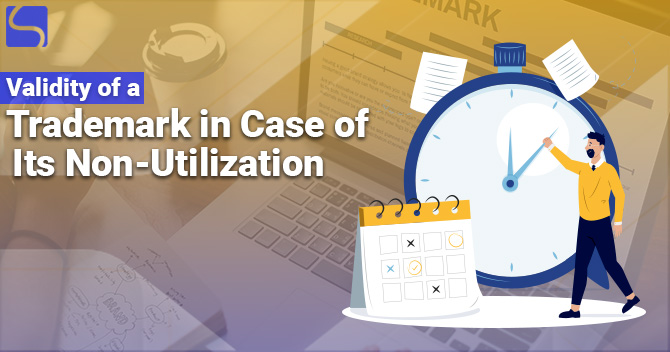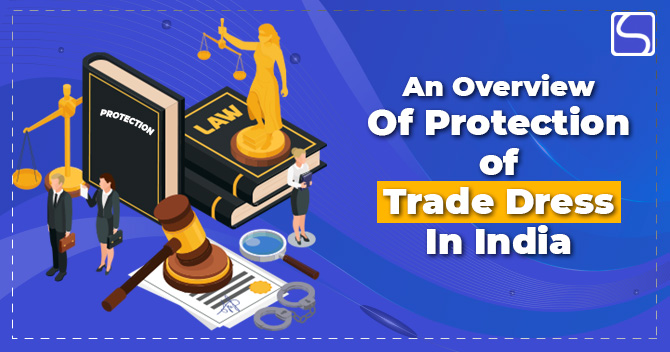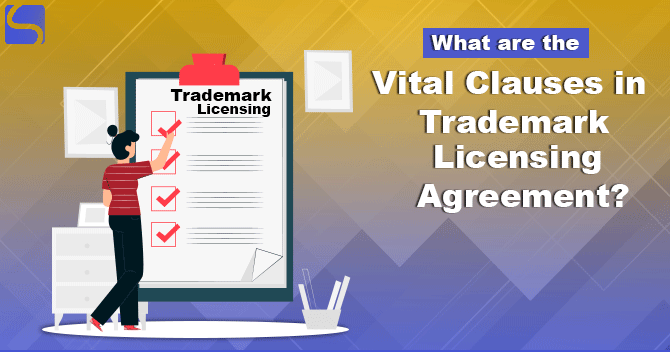Validity of a Trademark in Case of its Non-Utilization

Siddharth Verma | Updated: Nov 08, 2021 | Category: Trademark
Trademark is one form of IPR (Intellectual Property Rights). Trademarks are the exclusive rights that are granted to the inventor, and they include a name, word, symbol, or device & signature that differentiate goods of other entities. Through the Trademark registration, the owner can prevent the use of his word and signature by a third competitor. The proprietor of the Trademark can be a person, business entity, or any legal entity. A Trademark might be found on the packaging, a label, a voucher, or the actual product. For the sake of brand recognition and registration and on corporate structures, Trademarks are frequently displayed on the company’s display board. As far as the validity of a Trademark is concerned, it depends upon its utilization. Scroll down to check more information regarding the validity of a Trademark in case of its utilization.
Table of Contents
Utilization of Trademark
A Trademark can be utilized and registered by the owner in their name so that the government can protect their Trademark. Brands are to be used by the company, individual, or any other legal entity against copying and illegal branding of the original Trademark of the owner. The registration of the Trademark is very much needed to secure the ownership of the Trademark. The owner of a registered Trademark, in contrast to the owner of an unregistered Trademark, has a more extraordinary legal claim to protection. In the matter of Hardie trading Ltd. v. Addison paint and chemicals Ltd., the Supreme Court supported the idea of the usage of non-physical Trademark. The Supreme court offered a broader view of Trademark usage, saying that it might be
non-physical and that there was no reason to restrict the user’s ability to use the Trademark on goods or sell goods carrying the brand.
The registration process of the Trademark
Step-1 An application for Trademark Registration is supposed to be submitted to the Trademark Office, then the preliminary scrutinization of the Trademark would begin. This is to assess the genuineness and accuracy of the factual details.
Step-2 After the receipt of the Trademark application, the registrar shall publish the owner’s mark, sign, and other Trademark works. It means the printing of
Trademark name symbols and both in the Trademark journal.
Step-3 At this point, the Trademarked name or logo, or both, has been published in the Trademark Journal, inviting any objections.
Step-4 If in case there is no more objections or oppositions to the mark are received, the application is approved. Then it would be labelled ‘Registered.’ When the Trademark applicants may start utilizing the Trademark sign next to the logo or name, the application is complete.
Validity of a Trademark
In India, the validity of a Trademark is granted for ten years from the date of registration of the Trademark shown on the certificate. However, in such opposition or rectification processes, if a Trademark owner has not used the mark for more than five years, equal to 63 months, he may lose his Trademark rights.
When to commence the use of the registered Trademark?
Anyone can start utilizing their Trademark at any earliest. Although, there is no particular time limit for using the Trademark. This implies that the Trademark can be used even before the Trademark registration certificate is issued. You should have the right to use your Trademark both inside and outside of the firm. This includes using your Trademark on billboards, the brand’s official website, notifications, internal communications, and commercials.
What are the conditions in which a Trademark Cannot Be Removed?
There are three conditions under which, notwithstanding the utilization of a Trademark in respect to the validity of a Trademark, it would not be removed. The conditions are-
- When the applicant wants to commence a business and subsequently register it under the Companies Act, as a result, non-use while waiting for the Trademark to be assigned to that firm is acceptable.
- The mark’s owner wants for it to be used by someone else. As a result, if you’re waiting for the Trademark to be registered in the name of someone else, you won’t be able to remove it.
- In Special commercial conditions — If the non-utilization of a Trademark is not due to a mistake/omission on the part of the owner, but rather to unanticipated circumstances. For example, any legislation or regulation that places limits on the use of a specific brand. Some businesses may need to wait for international or domestic permissions as well. As a result, they may have a reason to utilize the mark in the interim.
Limitation on the ground of Non-use of Trademark
Section 47 of the Trademark act, 1999[1] implies that once the Trademark is registered, it can be removed upon the application filed before the concerned body for its removal on the following grounds:-
- Invalid Intention to use the Trademark– an application for the removal of the Trademark can be made by any person against the owner of the Trademark if he has reason to believe that the proprietor of the Trademark does not have the valid Intention to use it. Moreover, there should have been no bona fide use of the Trademark concerning such products or services for the previous three months before filing the application under this section.
- No use of registered Trademark more than five years of its validity– If a registered Trademark has not been utilized concerning such products or services for a continuous period of five years or more can be withdrawn from the register.
In the matter of Kabushiki Kaisha Toshiba v. TOSHIBA Appliances in 2008, the validity of a Trademark was examined by the court, and it was upheld that the desire to use a Trademark that is being considered for registration must be bonafide and authentic.” “When a Trademark is registered, it grants a significant right,” the division bench continued. It aims to differentiate between items produced by one person and those created by another. As a result, a person who does not intend to use the Trademark in good faith is unlikely to get his goods registered to prevent others from doing so.” Advertising without actually promoting any products or services does not qualify as bona fife use of the Trademark for this provision. The use of a registered Trademark over the internet or on a website may, in some cases, be considered legitimate usage. However, an online proposal for goods or services is legal provided it is accompanied by the capacity to supply the products or services in India.
Conclusion
We conclude that a Trademark can be utilized and registered by the owner in their name so that the government can protect their Trademark. The validity of a Trademark is for 10 years from the date o its registration; however, if the proprietor of the Trademark does not utilize it for more than 5 years, it seems that he may lose his rights over the Trademark.
Read our article:A Complete Analysis of Cybersquatting in Trademark Act














